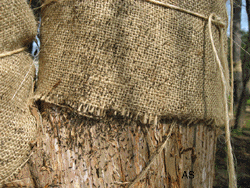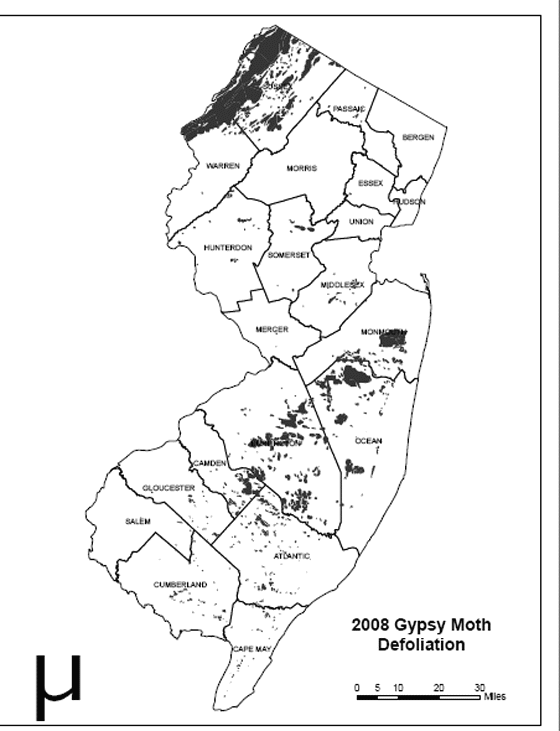
2008 Update - Gypsy Moth Tree Damage in Shamong Township, NJ
More Updates: 2009 Update, 2010 Update, 2011 Update, 2012 Update, 2013 Update
As of July 2019 we have not seen Gypsy Moths in Shamong Township NJ. We keep looking. They will come back someday. We hope to be ready.
What We Did in 2008
Burlington County, NJ suffered less tree defoliation by gypsy moth caterpillars during 2008; 66,454 acres of trees were defoliated in 2008 vs. 90,574 acres in 2007. However, New Jersey overall suffered more damage with 339,240 acres defoliated, up from 320,610 acres in 2007. The worst damage seems to have shifted to the northwest, with Sussex County being the hardest hit in 2008. (See map below.)
In Shamong, NJ, the gypsy moth problem was not as bad in 2008 as is was in 2007. The Central Record reported that 5,180 acres were defoliated in Shamong in 2008, vs. 9,968 acres in 2007.
Aerial spraying of BT (bacillus thuringiensis) by the Township surely provided some benefit, however they didn't spray our property. T he situation may have been helped by the cold, wet weather in late April and early May. The wet weather lets the caterpiller's natural enemy, the fungus "Entomaphaga Mamaiga" to multiply and thrive. It likely killed many of the gypsy moth larvae.
These juvenile gypsy moth
larvae all died after
encountering the
sprayed burlap.
In 2008,we shouldn't have had as many gypsy moths because in 2007 we killed so many of them and also
destroyed all the egg masses we could find. However many of the eggs that were layed in 2007, still hatched in 2008.
See 2008 Crop.
In 2008, in addition to using the duct tape, Tanglefoot and burlap methods, we
used the insecticide Deltamethrin sprayed on the burlap.
What we observed was that once the caterpillers encountered
the treated burlap, they became lethargic and sickly. They died shortly thereafter. Larger caterpillers
coming down from the tops of trees stopped on the burlap, often crawled under it, and also died.
The
result for us was that we did not have to bother collecting and destroying gypsy moth caterpillers.
In 2008 our trees are mostly survived. We also
did not have gypsy moth feces raining down on us. And we did not have to continually wash our cars, porch and deck.
New Jersey 2008 Gypsy Moth Tree Defoliation Map
Map from the New Jersey Department of Agriculture

